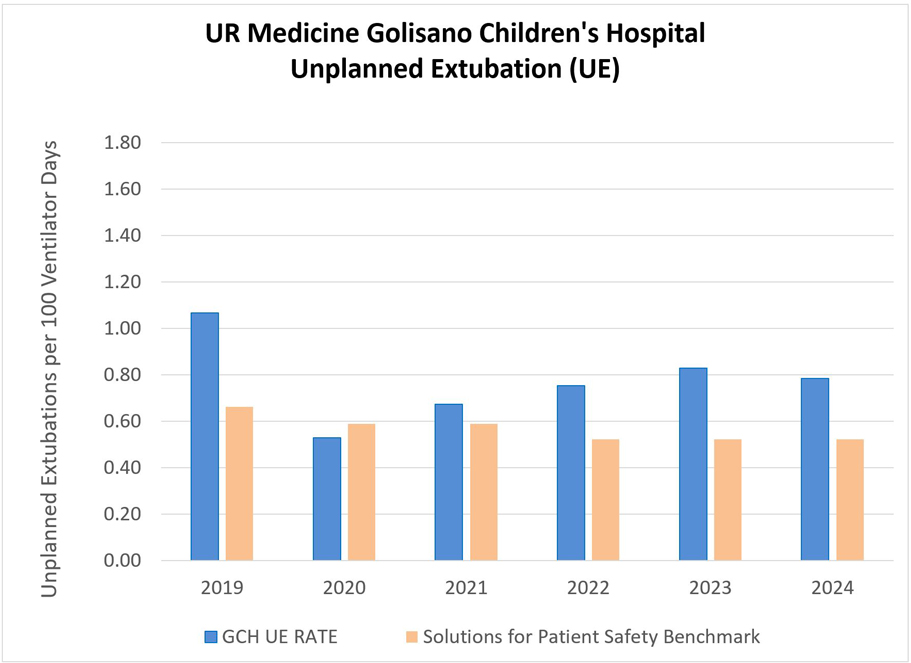Unplanned Extubations - UE
Unplanned Extubations - UE
What You Can Do
- Ask your doctor and nurses to explain why your child needs the ventilator to help them breathe and how long your child will have it.
- Tell your child’s medical team if you see the tape or securement device on the ETT is loose or coming off your child’s face
- Do not let family and friends who visit touch the ventilator or any tubing.
- Do not pick up or move your child without assistance from the nurse or respiratory therapist, while they are on a ventilator.
Why This Measure is Important
- An endotracheal tube (ETT) is a small, plastic tube inserted into the child’s trachea through the mouth, to maintain an unobstructed passageway to deliver oxygen to the lungs. The tube is connected to a ventilator, which controls the patient's breathing and delivers oxygen to the lungs.
- When the ETT accidentally comes out of the trachea, this is known as an “unplanned extubation.”
- UEs can extend hospital stays, and require additional treatment or medical interventions. You are key in helping us to know your child while they are in the hospital with us.
How We Measure
- The number of unplanned extubation events is per 100 ventilator days. Each day your child is in the hospital and has a ventilator to help them breathe, counts as one ventilator day.
- Our goal is to maintain unplanned extubation event rates lower than the national benchmark, ultimately driving towards zero.
What We Are Doing to Improve
- Consistently use a set of best practices, called “bundles,” to minimize the risk of these events.
- Participate in Solutions for Patient Safety, a national improvement collaborative focused on eliminating all patient harm by sharing ideas, data, and best practices among United States children’s hospitals.
- Review monthly, as a team, all cases of UE to identify opportunities for improvement.
